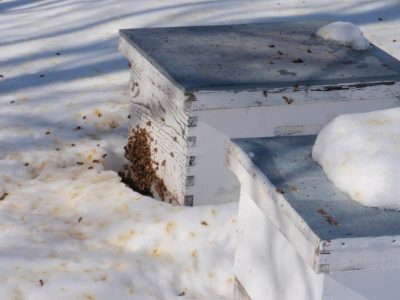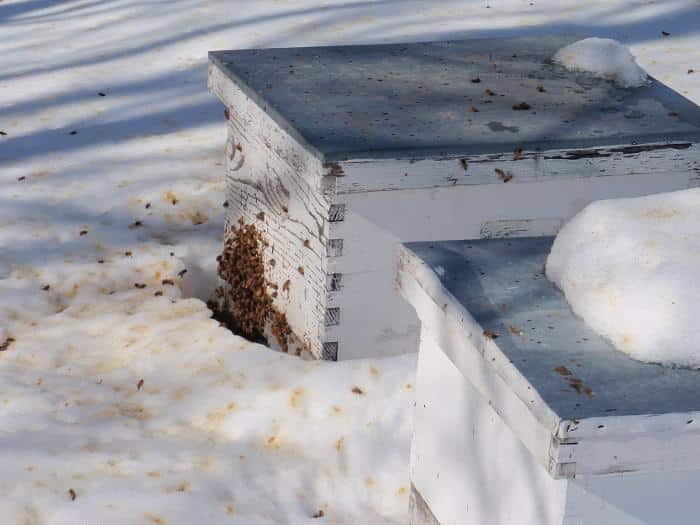
This follows record losses of the little pollinators due to colony collapse disorder, a condition in which entire hives disappear and/or die. Honeybees are responsible for directly pollinating about 70 percent of the food supply.
Iowa beekeeper Mike Swett, of Squaw Creek Honey told KCCI, “It’s devastating. When I came out and saw my loss, I mean you literally just cry.”
The vast majority of the honeybees in Swett’s 25 hives died during a winter that saw multiple days below zero. The national average is about 30 percent.
“I have dead bees, and I still have combed honey here and the bees are just basically starved to death. Last year I probably lost 8 to 10 percent of my bees. This year, I’m seeing 60 percent loss,” the Iowa beekeeper added. Swett said it was so cold this year that his honeybees were unable to move into their cluster to garner food.
The Iowa beekeeper estimates that the bee deaths cost him approximately $1,000.
Beekeepers from across America have lamented the decline of their colonies for several years. As previously reported by Off The Grid News, a recent Environmental Audit Committee (EAC) report in the United Kingdom shed more than a little light on the problem, but so far, United States agricultural experts have failed to take corrective steps.
The Ultimate Guide to Keeping Stronger Colonies and Healthier, More Productive Bees
A class of insecticide chemicals routinely used in America are killing off the bee population, according to the UK report. The chemical culprits are typically applied to rapeseed (canola), corn, sugar beets, and a handful of other crops around the world. Related data released in the European Union confirms the threat to healthy bee colonies.
Iowa beekeeper Bob Wolff called the winter of 2013 the worst winter he has ever seen for the honeybee population. The volunteer beekeeper at the Indian Creek Nature Center in Cedar Rapids told The Gazette newspaper that only two of the 12 hives he kept still remain. Wolff estimates that the colony experienced a 60-70 percent loss overall.
The Iowa Department of Agriculture told KCCI that extreme weather conditions played a significant role in the deaths of “weaker, sicker, or malnourished” honeybee colonies. Andrew Joseph, a bee researcher for the agency estimates the loss at 70 percent or more for beekeepers in the state.
Said Joseph:
Pollination is the real value of honeybees. We all like to eat a diversity of foods in our diets. We depend on honeybees. If we want to see those flowers out there in the environment, we need pollinators. It’s not that bees can’t handle a cold winter or snow but when you go into winter with those types of bees [weak or sick] and then you’re confronted with the harshness of this season, they don’t make it through to spring time.
Honeybees typically gather closely around the queen bee and feed off of honey stored in the hive throughout the winter. When the winter is particularly harsh and long, some bees are forced to leave the cluster to look for food – and never return. As previously reported by Off The Grid News, neonicotinoids are often blamed for a nervous system disorder which prevents the bees from being able to navigate properly and find their hives.
The California drought also caused a significant loss of honeybees in the state which can usually be counted upon to resupply beekeepers in the spring. Many Iowa beekeepers are now ordering replacement honeybees from Georgia due to the lack of stock in California.
Sign up for Off The Grid News’ weekly email and stay informed about the issues important to you
